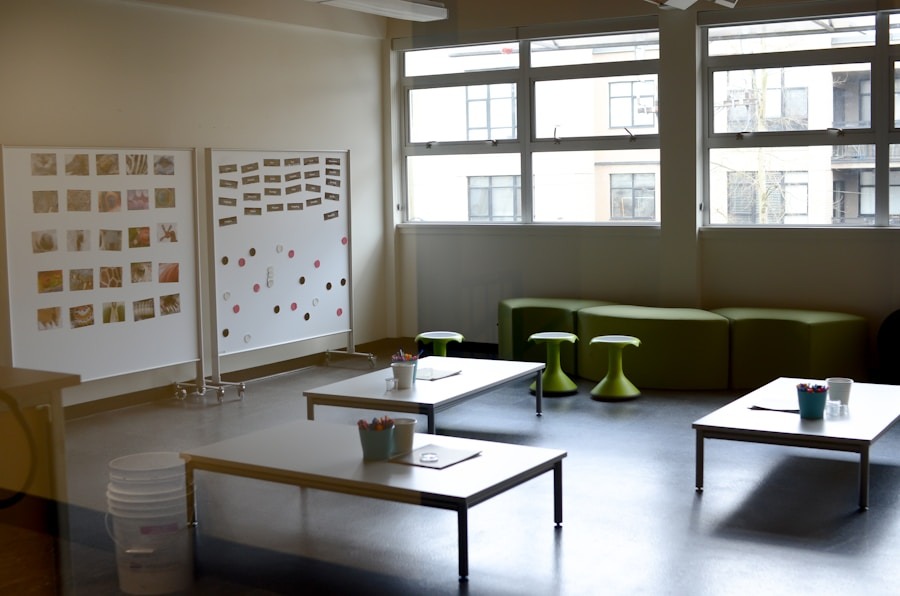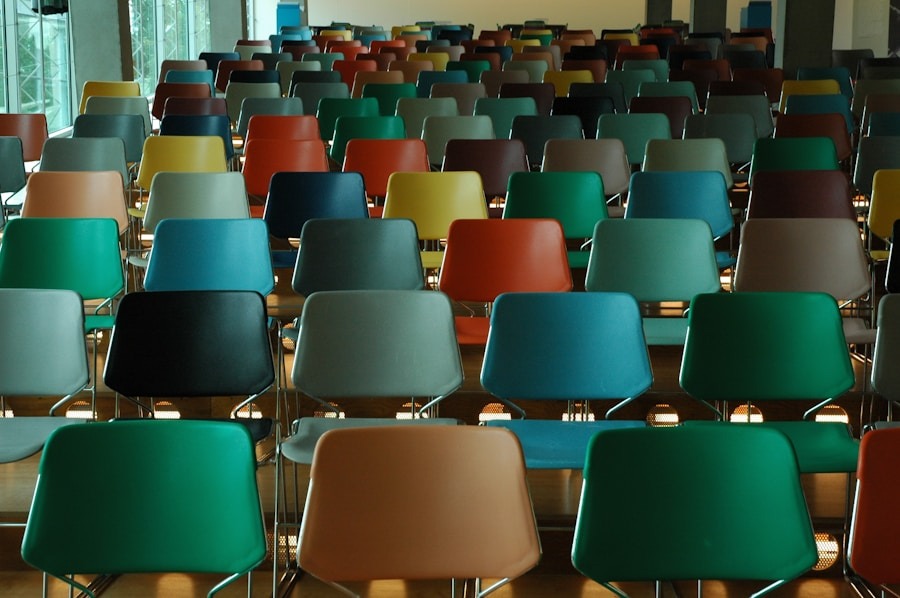Discipline and order are foundational elements in any effective learning environment. They create a structured atmosphere where students can focus on their studies without the distractions that chaos often brings. When discipline is present, students are more likely to engage with the material, participate in discussions, and collaborate with their peers.
This structured environment not only enhances academic performance but also fosters a sense of security among students. They know what to expect, which can significantly reduce anxiety and behavioral issues that often arise in less organized settings. Moreover, the importance of discipline extends beyond mere academic achievement; it plays a crucial role in social development.
In a disciplined environment, students learn essential life skills such as respect, responsibility, and self-control. These skills are not only vital for academic success but are also critical for personal growth and future professional endeavors. For instance, when students understand the importance of following rules and respecting authority, they are better prepared to navigate the complexities of adult life, including workplace dynamics and interpersonal relationships.
Thus, establishing discipline and order in learning spaces is not just about maintaining control; it is about equipping students with the tools they need to succeed both inside and outside the classroom.
Key Takeaways
- Discipline and order in learning spaces are crucial for creating an environment conducive to learning and growth.
- Strategies for establishing and maintaining discipline include setting clear expectations, being consistent, and addressing issues promptly.
- Creating a positive learning environment involves fostering a sense of community, celebrating diversity, and promoting a growth mindset.
- Implementing consistent consequences for misbehavior helps students understand the importance of accountability and respect for others.
- Building relationships and communication with students is essential for understanding their needs and creating a supportive learning environment.
- Seeking support and collaboration from colleagues can provide valuable insights and resources for effectively managing discipline and order in learning spaces.
Strategies for Establishing and Maintaining Discipline
Establishing and maintaining discipline in a learning environment requires a multifaceted approach that combines clear expectations, consistent enforcement, and proactive strategies. One effective strategy is to set clear rules and guidelines at the beginning of the academic year or term. These rules should be communicated explicitly to students, ensuring that they understand what is expected of them.
For example, a teacher might outline specific behaviors that are acceptable during class discussions, such as raising hands to speak or listening attentively when others are talking. By providing a clear framework, students are more likely to adhere to these expectations. In addition to setting rules, consistency is key in maintaining discipline.
When consequences for misbehavior are applied uniformly, students learn that their actions have predictable outcomes.
For instance, if a student disrupts class by talking out of turn, a teacher might implement a predetermined consequence, such as a warning followed by a time-out or loss of privileges.
By applying these consequences consistently across all students, the teacher establishes an environment where everyone understands that misbehavior will not be tolerated. Another effective strategy involves proactive classroom management techniques. This includes anticipating potential disruptions and addressing them before they escalate.
For example, if a teacher notices that certain students tend to become restless during long lectures, they might incorporate interactive activities or breaks to keep students engaged. By being proactive rather than reactive, educators can maintain order while also fostering an engaging learning experience.
Creating a Positive Learning Environment

A positive learning environment is essential for fostering student engagement and motivation. Such an environment is characterized by mutual respect, encouragement, and support among students and teachers alike. One way to create this atmosphere is by promoting inclusivity and diversity within the classroom.
When students feel valued and respected for their unique backgrounds and perspectives, they are more likely to participate actively in discussions and collaborate with their peers. For instance, incorporating diverse materials and perspectives into lesson plans can help students see themselves reflected in the curriculum, thereby enhancing their sense of belonging. Additionally, fostering a positive learning environment involves recognizing and celebrating student achievements, both big and small.
Acknowledging accomplishments can boost students’ self-esteem and motivate them to strive for further success. This could be as simple as verbal praise during class or more formal recognition through awards or certificates. By creating opportunities for students to showcase their work or talents, educators can cultivate an atmosphere where students feel proud of their contributions and are encouraged to support one another.
Furthermore, establishing routines can significantly contribute to a positive learning environment. Routines provide structure and predictability, which can help reduce anxiety among students. For example, starting each class with a brief review of previous material followed by an outline of the day’s objectives can set a positive tone for learning.
When students know what to expect, they are more likely to engage with the material actively.
Implementing Consistent Consequences for Misbehavior
Implementing consistent consequences for misbehavior is crucial in maintaining discipline within the classroom. When students understand that certain behaviors will lead to specific outcomes, they are more likely to think twice before acting out. It is essential that these consequences are clearly communicated from the outset so that all students are aware of the potential repercussions of their actions.
For instance, if a student repeatedly disrupts class by talking during lectures, the teacher might establish a clear consequence such as a warning followed by a loss of participation points. Moreover, it is important that consequences are fair and proportionate to the behavior exhibited. Overly harsh punishments can lead to resentment and disengagement among students, while too lenient consequences may fail to deter misbehavior effectively.
A balanced approach ensures that students understand the seriousness of their actions while still feeling supported in their learning journey. For example, if a student is caught cheating on an assignment, a fair consequence might involve receiving a zero on that assignment along with an opportunity to redo it for partial credit after discussing the importance of academic integrity. In addition to punitive measures, it is beneficial to incorporate restorative practices into the disciplinary process.
Restorative practices focus on repairing harm rather than simply punishing misbehavior. This approach encourages students to reflect on their actions and understand how they affect others. For instance, if a student bullies another classmate, instead of solely imposing a punishment, the teacher might facilitate a conversation between the two students to address the issue directly.
This not only holds the offending student accountable but also promotes empathy and understanding.
Building Relationships and Communication with Students
Building strong relationships with students is fundamental to creating an effective learning environment where discipline can thrive. When educators take the time to connect with their students on a personal level, it fosters trust and respect within the classroom. This connection can be established through simple gestures such as greeting students at the door or taking an interest in their lives outside of school.
By showing that they care about their students as individuals, teachers can create an atmosphere where students feel comfortable expressing themselves and seeking help when needed. Effective communication is also vital in building these relationships. Educators should strive to maintain open lines of communication with their students, encouraging them to voice their thoughts and concerns freely.
Regular check-ins can be beneficial; for example, teachers might implement weekly feedback sessions where students can share their experiences in class or discuss any challenges they may be facing academically or socially. This practice not only helps educators identify potential issues early on but also empowers students by giving them a voice in their learning process. Additionally, involving parents in this communication loop can further strengthen relationships within the educational community.
Regular updates through newsletters or parent-teacher conferences can keep parents informed about their child’s progress while also providing opportunities for collaboration between home and school. When parents feel engaged in their child’s education, it reinforces the importance of discipline and order at home as well.
Seeking Support and Collaboration from Colleagues

Collaboration among educators is essential for creating a cohesive approach to discipline within a school setting. Teachers should not hesitate to seek support from colleagues when faced with challenging situations or when looking for new strategies to implement in their classrooms. Sharing experiences and best practices can lead to innovative solutions that benefit all students across different classrooms.
Professional development opportunities can also play a significant role in fostering collaboration among educators. Workshops focused on classroom management techniques or restorative practices can provide teachers with valuable insights and tools that they can apply in their own classrooms. By participating in these professional development sessions together, educators can build camaraderie while also enhancing their skills.
Furthermore, establishing mentorship programs within schools can facilitate ongoing support among staff members. Experienced teachers can guide newer educators through challenges related to discipline and classroom management while sharing effective strategies that have worked for them in the past. This collaborative approach not only strengthens individual teaching practices but also contributes to a more unified school culture where discipline is valued collectively.
In conclusion, discipline and order are integral components of effective learning environments that foster academic success and personal growth among students. By implementing clear strategies for establishing discipline, creating positive learning environments, enforcing consistent consequences for misbehavior, building strong relationships with students, and collaborating with colleagues, educators can cultivate classrooms where all students thrive academically and socially.
One related article to maintaining discipline and order in learning spaces is “Ideas of India: Gandhi and Ambedkar’s Indological Approaches.” This article explores the different perspectives and approaches of Mahatma Gandhi and B.R.
It delves into their ideologies and how they have influenced the social fabric of India. To read more about this fascinating topic, check out the article here.
FAQs
What is the importance of maintaining discipline and order in learning spaces?
Maintaining discipline and order in learning spaces is important for creating a conducive environment for effective teaching and learning. It helps to minimize distractions, promote focus, and create a sense of respect and responsibility among students.
How can discipline and order be maintained in learning spaces?
Discipline and order can be maintained in learning spaces through clear and consistent rules and expectations, positive reinforcement of good behavior, effective classroom management techniques, and the establishment of a supportive and respectful learning environment.
What are the benefits of maintaining discipline and order in learning spaces?
The benefits of maintaining discipline and order in learning spaces include improved student engagement and learning outcomes, reduced disruptions and distractions, increased teacher effectiveness, and the promotion of a positive and respectful learning environment.
What are some common challenges in maintaining discipline and order in learning spaces?
Common challenges in maintaining discipline and order in learning spaces include student misbehavior, lack of support from parents or administrators, overcrowded classrooms, and the need to address diverse learning needs and styles.
How can teachers and educators address discipline and order issues in learning spaces?
Teachers and educators can address discipline and order issues in learning spaces by implementing proactive strategies such as establishing clear expectations, building positive relationships with students, using effective communication and conflict resolution techniques, and seeking support from colleagues and administrators.






















+ There are no comments
Add yours